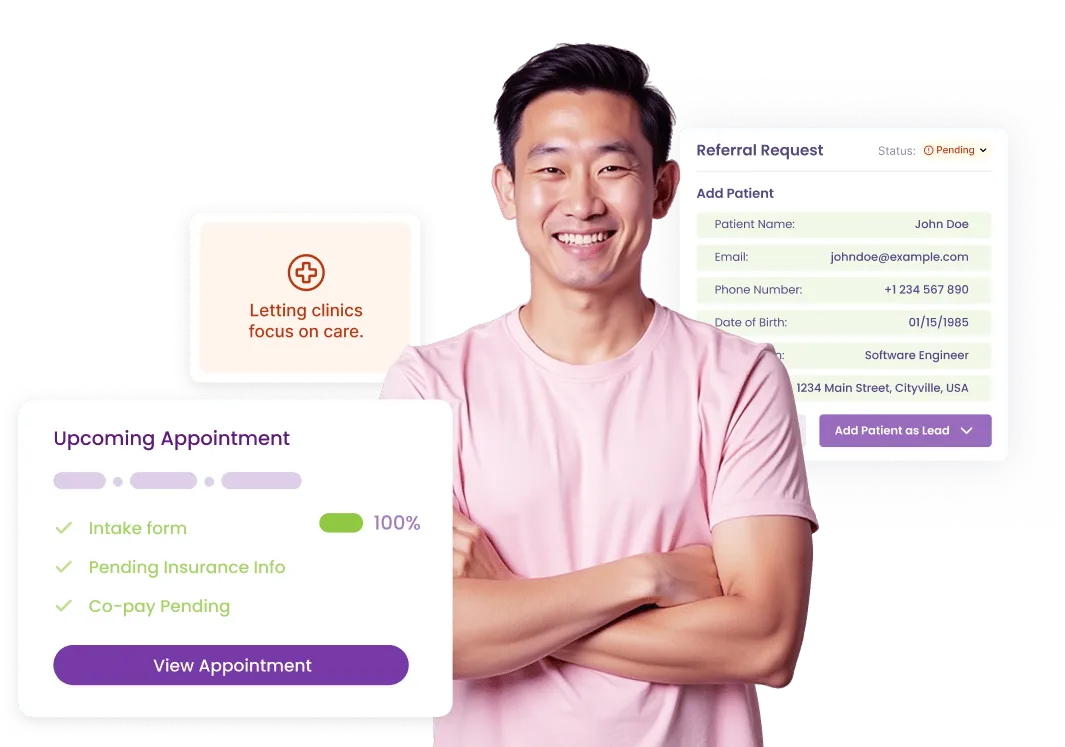99443 – Telehealth / Remote Behavioral Health Service
CPT code 99443 represents a distinct mental or behavioral health service, including evaluation, therapy, or care coordination.
What is CPT
99443
?
99443 is a key CPT code utilized in the realm of telehealth, particularly for remote or virtual care interactions between healthcare providers and patients. This entry provides an in-depth overview of the clinical applications of this code, the expectations surrounding documentation, and the considerations that providers must keep in mind when billing. It is essential for healthcare professionals to ensure that clinical notes are aligned with evidence-based practices, clearly outlining treatment goals, interventions employed, and measurable progress achieved during each session. When billing for services under this code that are time-based, it is crucial to accurately document the start and stop times, as this supports the billed duration and ensures compliance with payer requirements.

Documentation Tips
When billing for psychotherapy services under the CPT code 99443, it is imperative to document both the start and stop times to substantiate the time-based nature of the service provided. Additionally, healthcare professionals should include details regarding the therapeutic modality used (e.g., cognitive-behavioral therapy, psychodynamic therapy) or any assessment instruments applied during the session. Furthermore, documentation should reflect the clinical focus of the interaction, the patient's response to the interventions, and a clear plan for follow-up care. For any scored instruments utilized in the assessment, maintain copies of the completed tools for compliance purposes. In the context of telehealth, it is also essential to document patient consent and the specifics of the platform used for the session. Utilizing consistent documentation formats, such as the SOAP (Subjective, Objective, Assessment, Plan) or DAP (Data, Assessment, Plan) structures, can enhance audit readiness and ensure a comprehensive record of the service provided.

At a Glance
- Service Type: Telehealth
- Use Case: Remote / Virtual Care
- Typical Setting: Outpatient clinic or telehealth (subject to payer policy)
- Billing Unit: Per session or per instrument (varies by specific code)
- Common Pairings: 90791 (psychiatric diagnostic evaluation), 96127 (brief emotional/behavioral assessment), various psychotherapy CPT codes
Billing Examples
A telehealth visit billed under 99443 should adhere to documentation standards similar to those required for in-person visits. However, it’s vital to include specific details such as the technology platform used (e.g., Zoom, Doxy.me), patient consent for telehealth services, and confirmation of synchronous communication. For instance, a provider might document: "The session initiated via Zoom with patient consent obtained prior. The patient actively engaged in the session, and all therapeutic techniques were effectively communicated in real-time." It is important to note that different codes may apply for telephone consultations or asynchronous interactions, which often have distinct reimbursement policies. Therefore, providers must familiarize themselves with the specific guidelines governing these modalities to avoid billing errors.
Compliance Guidelines
- Prior to billing, verify the payer’s coverage and authorization requirements to ensure compliance with their policies.
- Thoroughly document medical necessity for the services rendered and explicitly link them to appropriate ICD-10 diagnoses codes.
- Utilize the correct modifiers, such as Modifier 95 for telehealth services, as required by the payer.
- Avoid upcoding by selecting the CPT code that accurately reflects the documented time and service level provided during the session.
- Conduct regular audits of billing practices to minimize claim denials and enhance the quality of documentation.
Common ICD-10 Codes
Helpful links for mental health billing and documentation
- F41.1 (Generalized Anxiety Disorder)
- F32.0 (Major Depressive Disorder, Single Episode)
- Z04.8 (Encounter for Other Specified Examination)
- F43.21 (Acute Stress Disorder)
Additional Resources
Helpful links for mental health billing and documentation
Related CPT Codes
Helpful links for mental health billing and documentation
Got questions? We’ve got answers.
Need more help? Reach out to us.
Q1: What is the primary purpose of this code?
A: CPT code 99443 is designated for telehealth services that meet the specific clinical activity criteria outlined in the code description. It is essential to ensure that all documentation supports the billed service adequately.
Q2: Is this code applicable for telehealth billing?
A: Yes, numerous payers provide coverage for telehealth services billed under this code, provided that the service is conducted synchronously, and appropriate modifiers and consent documentation are in place. It is advisable to review the individual payer’s policy.
Q3: What documentation might payers request for reimbursement?
A: Payers typically require detailed documentation that includes time spent, therapeutic techniques or assessment instruments employed, the patient’s response to treatment, and a direct link to a covered ICD-10 diagnosis.
Q4: Can CPT 99443 be billed concurrently with other services?
A: When billing multiple services, it is crucial to document the distinct time spent and rationale for each service. Providers should also be aware of the use of add-on codes or E/M (Evaluation and Management) separation rules where applicable.
Q5: What are some common reasons for claim denials?
A: Common denial reasons include insufficient time records, lack of documented medical necessity, incorrect use of modifiers, or billing services beyond the allowable frequency limits set by payers.

